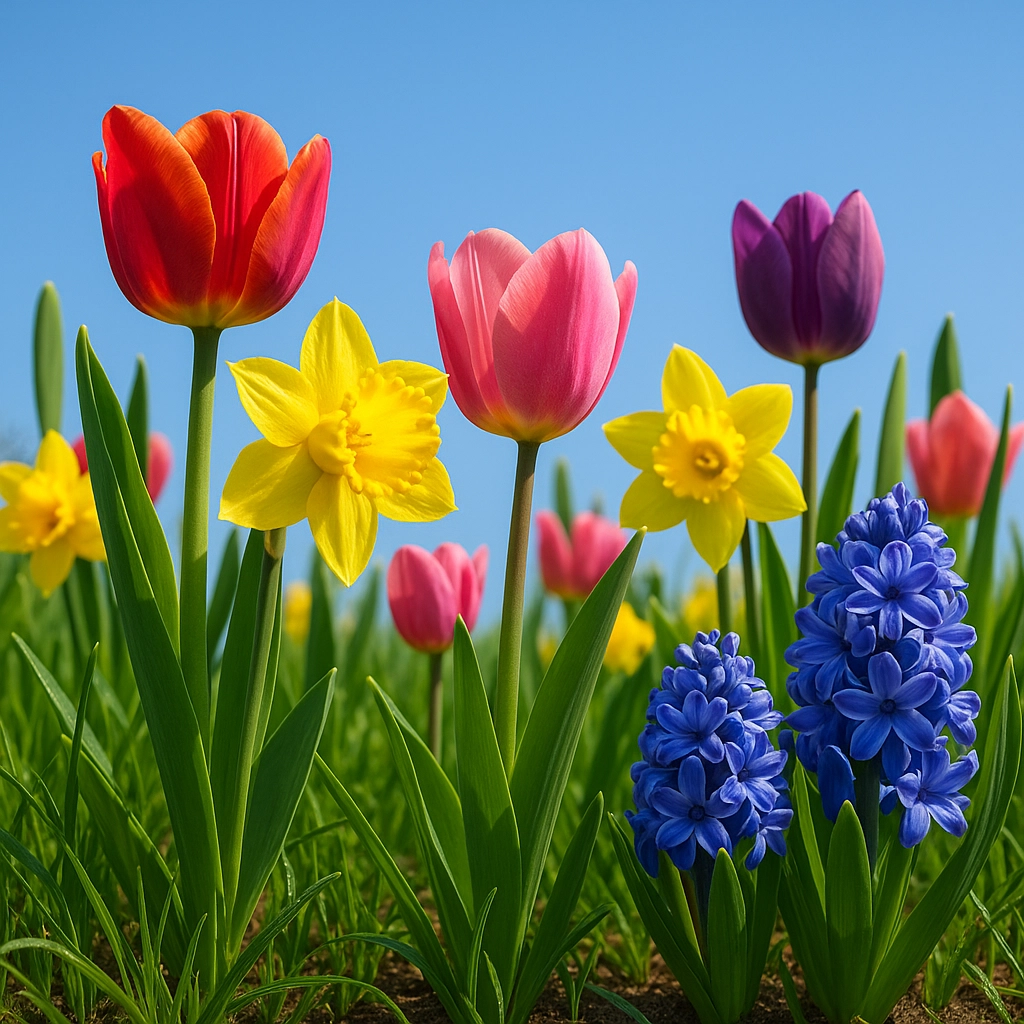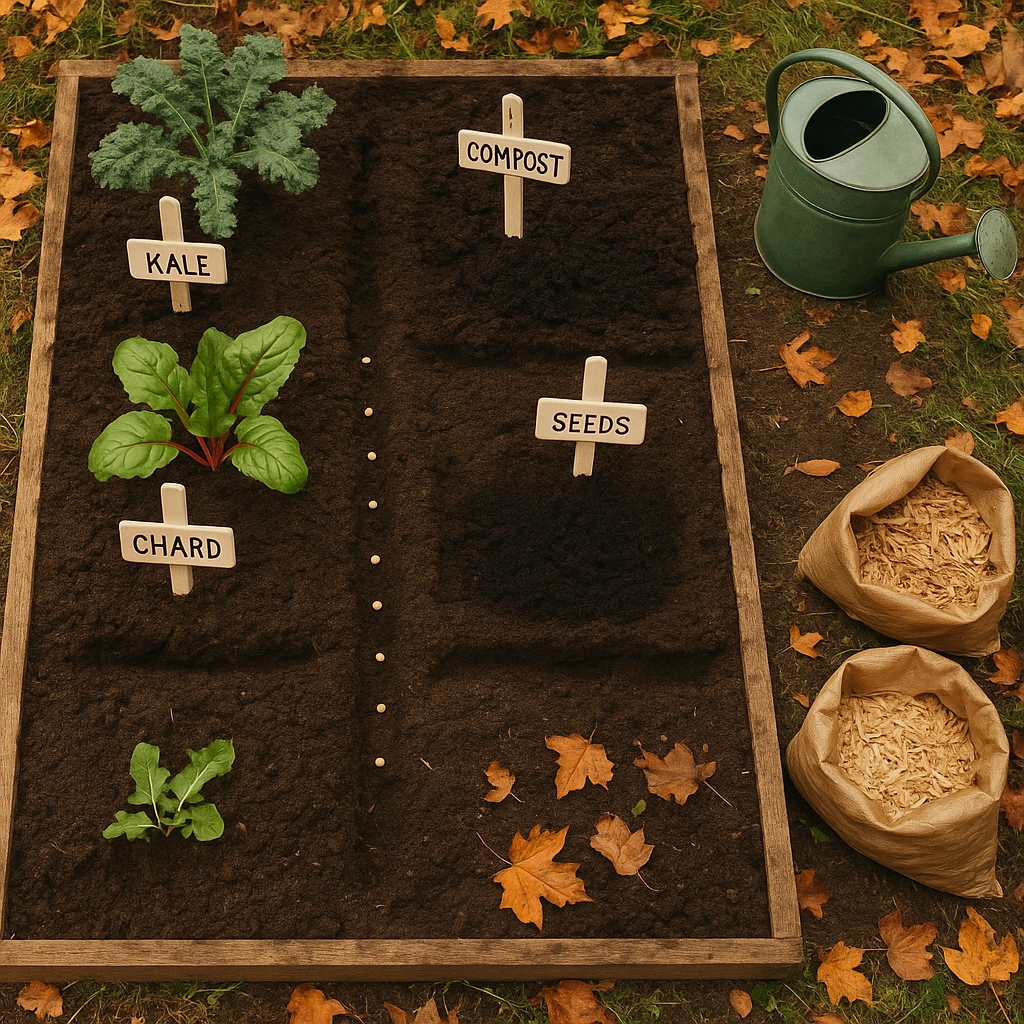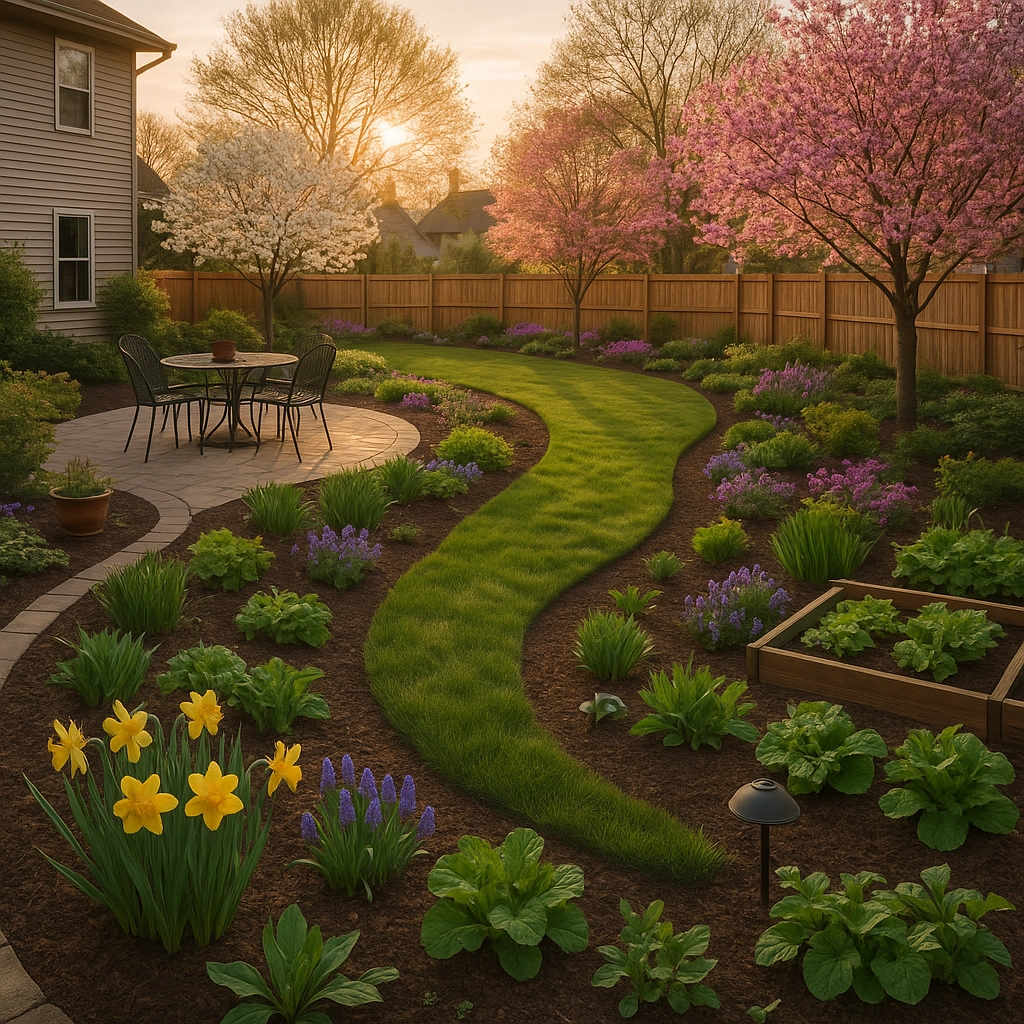Why Fall Planting Sets the Stage for Spring Success
Ever wondered why serious gardeners get excited as the days start to cool down? It’s because fall is one of the smartest times to plant. The air is crisp, pest numbers plummet, weeds chill out, and the soil is still warm from soaking up summer sun. This combo is basically a VIP pass for root development and plant establishment.
Fall-planted perennials, veggies, and bulbs get a double boost: a cool autumn for settling in and an early jumpstart as soon as the soil thaws next spring. Roots keep growing until the ground freezes, so your plants wake up strong when the season shifts.
The prime time? Plant about six weeks before the first hard frost in Northeast Ohio (usually late September through mid-October). This gives enough time for roots to dig in, but not enough for a growth spurt that could leave them vulnerable to winter.
Vegetable Garden: What to Plant for Spring Payoff
Leafy Greens to Love
If garden-fresh salads are your jam, sow arugula, lettuce, spinach, and Swiss chard this fall. These leafy greens adore cool weather. With a little cover, you could even be picking leaves deep into fall—or again early next spring as soon as new growth appears.

Root Vegetables: Flavor Gets Even Better
Carrots, beets, and radishes thrive when the temps cool. These root crops get sweeter after a nip of frost and offer crisp harvests late into the season. Don’t forget about turnips and parsnips for an even greater early spring bounty.
Brassicas: Big on Taste, Tough on Cold
Broccoli, Brussels sprouts, cabbage, and cauliflower not only handle chilly weather, but some actually taste better after a light frost. Start these in late summer or transplant healthy starts by early fall so they hit peak flavor before winter.
Garlic: The Non-Negotiable Fall Crop
Garlic is a game changer. Plant individual cloves (pointy end up!) in October. They’ll settle in before winter, then burst to life next spring, leading to plump, flavorful bulbs by June or July. Skipping fall garlic means waiting a whole year for the next chance. Don’t miss it.
Ornamental Power Plays: Perennials & Bulbs That Steal the Spring Show
Spring-Flowering Bulbs: Instant Curb Appeal
Nothing says “spring is here” like the sight of tulips, daffodils, crocuses, and hyacinths after months of gray. These bulbs need cool winter conditions to trigger their blooms. Plant them in well-drained soil about 6 inches deep and let nature take over.

Perennials: Set and Forget
Coneflowers, hostas, daylilies, black-eyed Susans, and peonies all do best with a fall planting. Perennials use cool autumn to expand their roots—so they put on a serious show next spring with less care required.
Native Plants & Wildflowers: Pollinator Paradise
If you want a garden buzzing with bees, butterflies, and birds, mixing in some native wildflowers is key. Fall planting mimics how they grow in nature. Blanketflower, purple coneflower, milkweed, and goldenrod are perfect for starting now. Their seeds need that winter chill (“stratification”) to sprout strong in spring.

Shrubs and Trees: Plant Now, Thrive Later
Evergreens, shade trees, and flowering shrubs like lilacs, viburnum, hydrangea, and serviceberry benefit from fall planting. Root systems get established before summer’s heat, which means less watering and shock once things heat up. Just be sure to mulch well and water until the ground freezes to keep roots cozy.
How to Get Your Fall Planting Right
Timing Is Everything
- Six weeks before first frost: the magic window for most plantings.
- Vegetables: Sow seeds for late-harvest crops (greens, roots) ASAP.
- Perennials/trees/shrubs: Plant once nights get cool but before ground freezes.
- Garlic & bulbs: Plant about a month before the ground is solid.
Quick Pre-Planting Checklist
- Clear out spent crops and weeds.
- Loosen soil and add compost.
- Plan layout with “tall in the north” to prevent shading.
- Water after planting and mulch where needed.

Why Your Fall-Planted Garden Will Outperform the Rest
- Less watering: Fall rain is more consistent than summer.
- Fewer pests/diseases: Cool temps and slow weeds make gardening easier.
- Stronger root growth: Plants spend energy underground, not on foliage.
- Early flowers and harvest: Your neighbors will be envious when your yard wakes up first!
Designing Your Fall Garden for Spring Wow-Factor
Before you get your hands dirty, walk your property. Notice where you want pops of color, privacy, shade, or fragrance by next spring. Mixing vegetables, bulbs, and ornamentals makes for a beautiful, low-maintenance landscape and can even boost your home value.
Pro Tips for Maximum Success in Northeast Ohio
- Don’t forget to label where you plant bulbs or garlic—you’ll thank yourself later!
- Water new plantings deeply, especially if autumn is dry.
- Add mulch to insulate roots but leave space around stems.
- If deer are a problem, choose daffodils or alliums (they’re critter-resistant).
- For a pollinator-friendly yard, add natives and avoid harsh chemicals.
Ready to Transform Your Yard? Start This Fall!
The possibilities with fall planting are huge—less work, more impact, and major bragging rights come spring. Whether you want a lush edible garden, curb appeal with instant color, or a pollinator-friendly oasis, the best time to get started is right now.
Need expert advice or help designing your perfect landscape? The experienced team at LeafStone Landscapes is ready to help you plan, plant, and care for your Northeast Ohio garden. Contact us today to schedule your fall planting consultation!

References:
[1] GardenTech.com – Why Fall Is the Best Time to Plant
[2] JoeGardener.com – Fall Vegetable Garden Guide
[4] Penn State Extension – Fall Vegetable Planting
[5] Gardenary.com – Best Fall Garden Plants
For more seasonal tips, check out the LeafStone Landscapes Blog. Let’s get growing!


